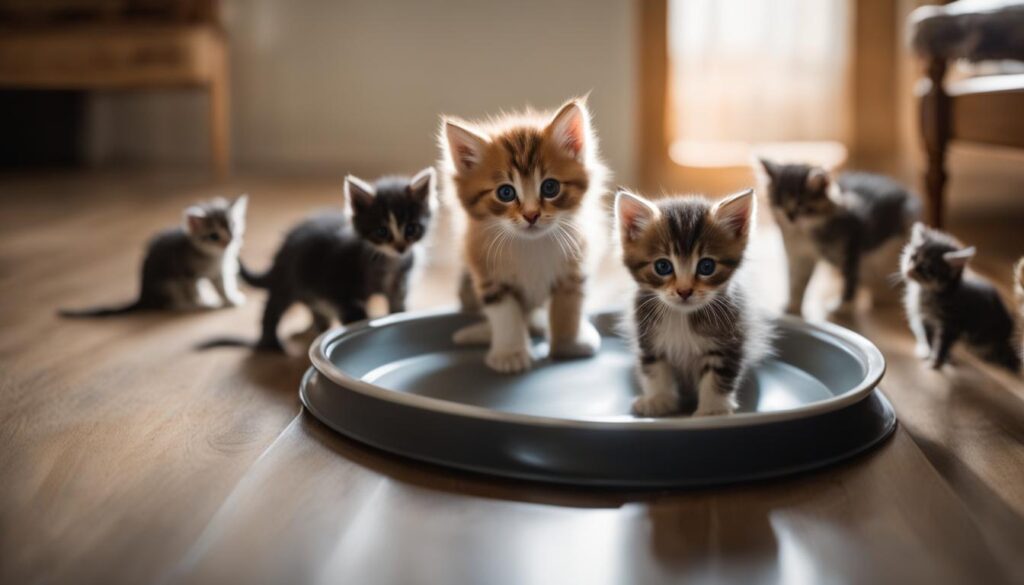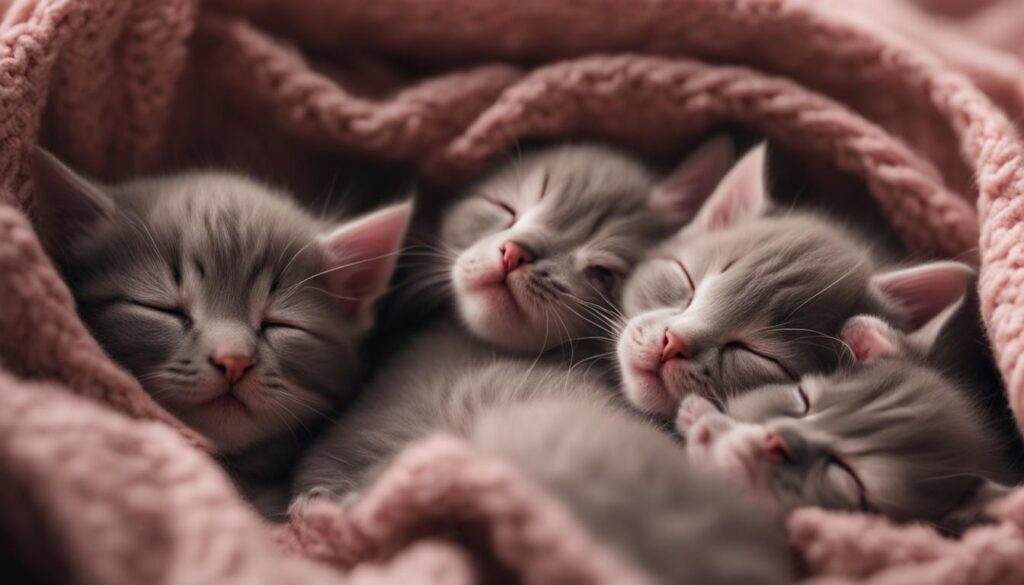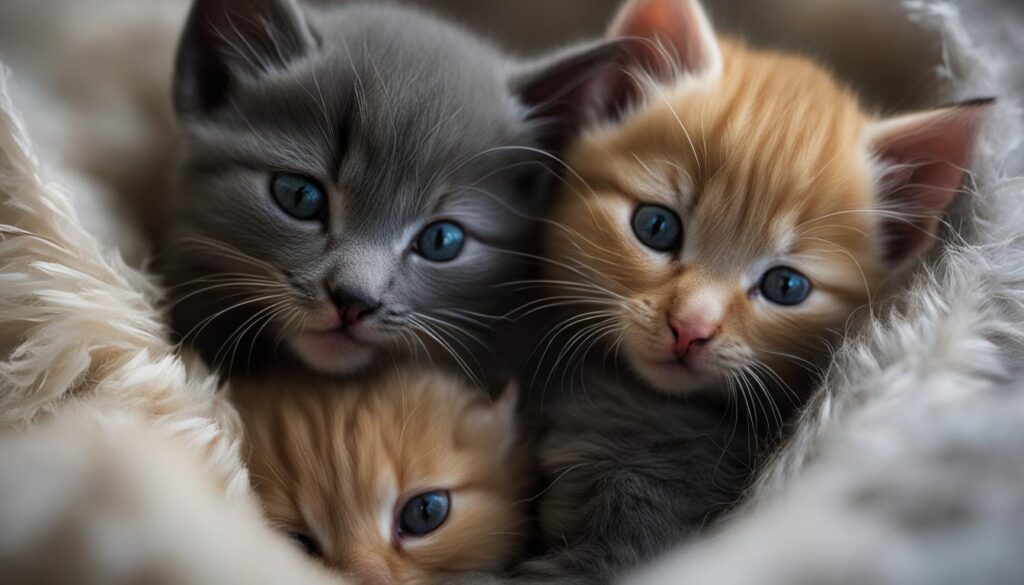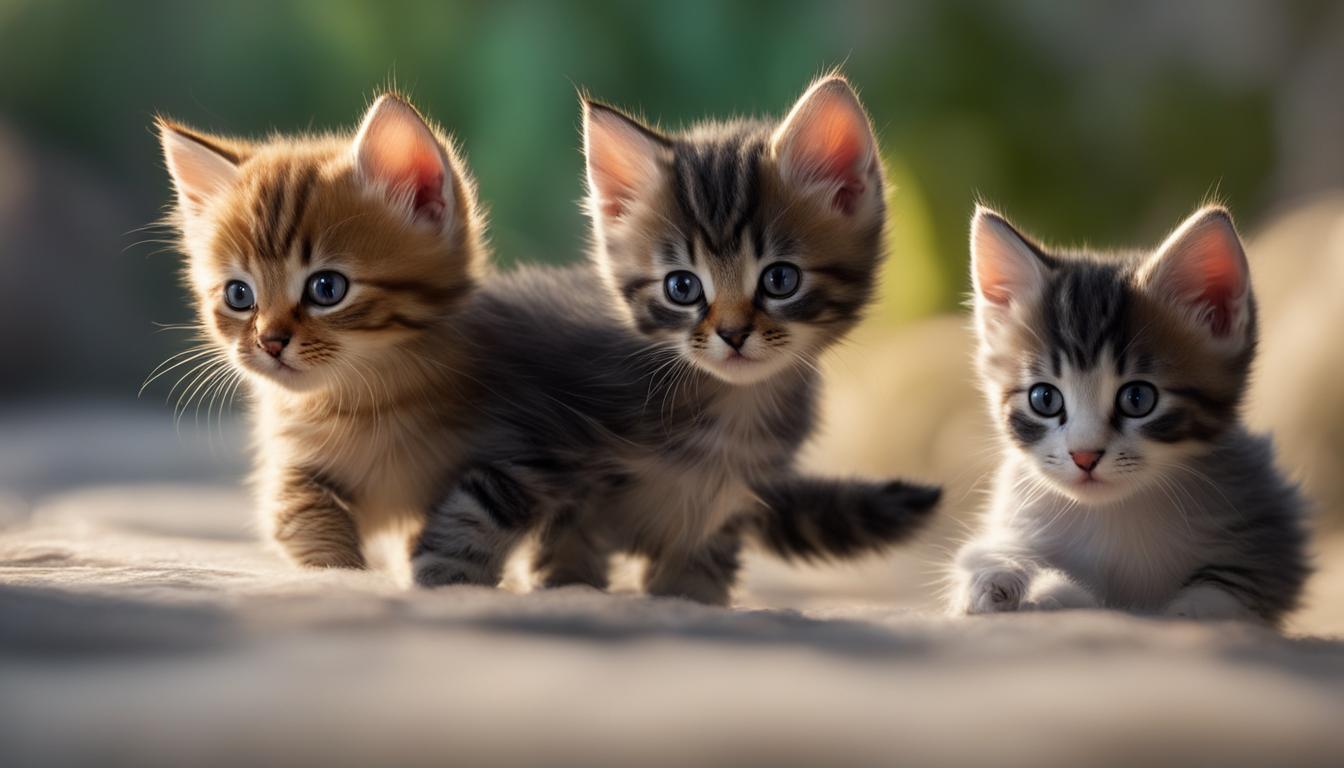Have you ever wondered when a kitten officially becomes a cat? Understanding the key stages of a kitten’s growth is essential for cat owners to provide the necessary care and support for their furry friends. From the adorable little ball of fur to a majestic adult feline, kittens go through various developmental milestones that shape their transition into adulthood. In this article, we will delve into the stages of cat growth, exploring the age when a kitten becomes a cat and the fascinating journey they undertake along the way.
Throughout this article, we will provide you with insights based on factual data from reliable sources to help you understand the development stages of your kitten. Whether you’re a first-time cat owner or a seasoned enthusiast, this information will assist you in ensuring that your feline companion receives the best possible care and support throughout their journey from a playful kitten to a fully-grown cat.
- Importance of Socialization for Kittens
- Weaning and Social Skills Development
- Development Milestones in the First Eight Weeks
- Newborn Kittens: Helplessness and Dependency
- Development in the First Week
- Milestones in the Second Week
- Third Week: Growing Independence and Exploration
- Fourth Week: Playfulness and Weaning
- Conclusion
- FAQ
- Source Links
Key Takeaways:
- Understanding the key stages of a kitten’s growth is crucial for cat owners.
- Kittens go through various developmental milestones that shape their transition into adulthood.
- By following the guidelines and providing a nurturing environment, you can ensure a healthy and happy journey for your kitten as it becomes a cat.
- Proper care and support during each stage of growth are essential for your cat’s overall well-being.
- Knowing when a kitten becomes a cat enables you to provide the appropriate care and fulfill their evolving needs.
Importance of Socialization for Kittens
When it comes to raising a healthy and well-adjusted cat, socialization plays a crucial role. Socializing your kitten from an early age helps them develop important social skills and build good people skills. It allows them to feel comfortable and confident in various environments and with different people, setting the foundation for a lifetime of positive interactions.
Kittens are naturally curious and playful, and their early experiences with humans and other animals shape their ability to socialize and interact later in life. As a responsible owner, it’s important to provide opportunities for socialization and ensure positive interactions. This includes gentle handling, petting, and talking to your kitten, as well as exposing them to different sounds, sights, and experiences.
Play behavior is an integral part of socialization for kittens. Through play, they learn important social cues, improve their coordination and balance, and develop essential hunting and predatory skills. Engaging in interactive play sessions with your kitten not only strengthens your bond but also helps them build confidence and learn appropriate behaviors, such as biting inhibition.
Benefits of Socialization for Kittens:
- Enhances their ability to handle new environments and situations
- Reduces fear and anxiety towards people and other animals
- Helps prevent behavioral issues, such as aggression and excessive shyness
- Promotes positive interactions with humans and other pets
- Improves their overall well-being and quality of life
“Socialization is the key to raising a well-rounded and confident cat. By exposing your kitten to a variety of experiences and positive interactions from a young age, you’ll set them up for a lifetime of happiness and social success.”
Remember, socialization is an ongoing process that continues throughout your cat’s life. By prioritizing socialization and providing a nurturing and stimulating environment, you can help your kitten develop into a well-adjusted and sociable adult cat.
Weaning and Social Skills Development
When it comes to the development of kittens, weaning plays a crucial role in their social skills development. Kittens are generally weaned at around six or seven weeks of age, but it’s important to note that they may continue to suckle for comfort even after weaning. This behavior is completely normal and helps them feel secure and content.
However, kittens that are orphaned or weaned too soon may exhibit inappropriate suckling behaviors later in life. To ensure appropriate social skills development, it is recommended that kittens stay with their littermates or other role-model cats for at least 12 weeks. During this time, they learn important behaviors through play and interaction, mimicking the actions of their feline companions.
In this stage, kittens start to understand boundaries, learn how to communicate and interact with other cats, and develop essential skills for adulthood. They engage in playful activities, such as chasing, pouncing, and wrestling, which helps them build coordination, agility, and social bonds with their littermates. Learning through play is an essential part of a kitten’s development and helps them become well-adjusted adult cats.
| Behavioral Milestones during Weaning and Social Skills Development |
|---|
| Continued suckling for comfort even after weaning |
| Learning boundaries and appropriate social interactions with littermates and other cats |
| Engaging in play behavior to develop coordination, agility, and social bonds |

“Allowing kittens to stay with their littermates or other role-model cats for an extended period during weaning is essential for their social skills development and overall well-being.” – Cat Behavior Expert
Development Milestones in the First Eight Weeks
During the first eight weeks of a kitten’s life, they go through several significant developmental milestones. Each stage is marked by different behaviors and needs, contributing to their growth and maturity. Understanding these milestones can help cat owners provide the proper care and support for their furry friends.
Neonatal Stage (0-2 weeks)
The neonatal stage is the first two weeks of a kitten’s life. During this time, they are completely dependent on their mother for nourishment and care. They are born with closed eyes, folded ears, and non-retractable claws. Their main activities are sleeping and nursing, as they are unable to regulate their body temperature.
Socialization Stage (2-7 weeks)
The socialization stage occurs between 2 and 7 weeks of age. This is a crucial period for kittens to learn social skills and bond with their littermates. They start exploring their environment, playing with their siblings, and interacting with their mother. It is during this stage that they begin to develop their communication skills and learn how to interact with humans and other animals.
Most Active Play Period (7-14 weeks)
From 7 to 14 weeks of age, kittens enter the most active play period. They become more curious and adventurous, exploring their surroundings and engaging in vigorous play. This stage is crucial for developing their motor skills, coordination, and agility. It’s essential for cat owners to provide safe and stimulating environments during this period to encourage healthy physical and mental development.
Ranking Period (3-6 months)
The ranking period occurs between 3 and 6 months of age. During this time, kittens establish their position in the family hierarchy, both with their littermates and with their human caregivers. They may display dominant or submissive behaviors as they navigate their social relationships. This stage is also important for implementing boundaries and training, as kittens continue to learn and develop their behavior.
Adolescence (6-18 months)
From 6 to 18 months of age, kittens transition into adolescence. This stage is characterized by hormonal changes and the development of sexual maturity. They may exhibit increased independence, territorial behavior, and a desire to explore their surroundings. It is crucial for cat owners to provide guidance, patience, and proper healthcare during this transitional period to ensure a smooth and healthy transition to adulthood.
| Stage | Age Range | Main Characteristics |
|---|---|---|
| Neonatal Stage | 0-2 weeks | Dependent on mother, closed eyes, folded ears, non-retractable claws, sleeping and nursing |
| Socialization Stage | 2-7 weeks | Learning social skills, exploring environment, playing with littermates, interacting with mother |
| Most Active Play Period | 7-14 weeks | Curiosity, adventurous play, developing motor skills and coordination |
| Ranking Period | 3-6 months | Establishing position in hierarchy, displaying dominant or submissive behaviors |
| Adolescence | 6-18 months | Hormonal changes, increased independence, territorial behavior |
Newborn Kittens: Helplessness and Dependency
When kittens are first born, they are incredibly vulnerable and rely completely on their mother for everything. Their physical characteristics reflect their state of helplessness and dependency. Newborn kittens are born with closed eyes, folded ears, and non-retractable claws. These features will gradually change as they grow and develop.

During the first few weeks of life, newborn kittens are unable to regulate their body temperature. They depend on their mother for warmth and comfort. It is vital to provide a warm and stable environment for them, ensuring they have a cozy nest and a heat source to keep them comfortable.
Additionally, newborn kittens require round-the-clock care, including feeding and bathroom assistance. They spend most of their time sleeping, as their bodies continue to grow and develop. It is essential to handle them with care and provide them with a nurturing environment to ensure their well-being.
Development in the First Week
During the first week of a kitten’s life, they undergo significant physical and behavioral development. At this stage, they are completely dependent on their mother or caregiver for all their needs. Their eyes may start opening by the end of the week, and their ears begin to unfold. However, they are still unable to stand or eliminate waste on their own.
Temperature regulation is crucial during this time, as kittens need a warm and stable environment to thrive. It is important to provide a cozy nesting area with appropriate bedding to help maintain their body temperature. Keeping the room temperature between 80-85°F (26-29°C) is ideal for their comfort and well-being.
While their physical abilities are limited, kittens do show early signs of behavioral development. They may begin to move around more and make small, wobbly attempts at crawling. They also rely on their mother for nourishment, as they are still unable to consume solid food at this stage. It is essential to ensure they receive proper nutrition through their mother’s milk to support their growth and development.

Milestones in the Second Week
In the second week of a kitten’s life, you can expect to see significant advancements in their physical development and behavior. Their coordination improves, their vision and hearing become more acute, and they start to interact with their environment in new ways.
One of the most noticeable changes during this stage is the improvement in vision and hearing. By the second week, a kitten’s eyes are fully open, and they can see more clearly. Their hearing also becomes more developed, allowing them to respond to sounds and voices around them.
Additionally, kittens begin to show signs of increased coordination. They may attempt their first steps, although they may still be a bit wobbly on their feet. This is an exciting time as they start to explore their surroundings and become more curious about the world around them.
As their physical abilities improve, kittens also experience some behavioral changes. They become more alert and responsive, showing a heightened curiosity and interaction with their environment. This is a crucial stage for their cognitive and social development as they start to learn and discover new things.
Third Week: Growing Independence and Exploration
During the third week of a kitten’s life, significant development occurs in both their physical abilities and behavioral patterns. At this stage, kittens become more independent and confident in their movements, as their coordination improves. They can now walk steadily and explore their surroundings with increasing curiosity. It is an exciting time as they begin to demonstrate their growing motor skills.
One of the notable milestones during the third week is the introduction to solid food. While kittens still rely on their mother’s milk for nutrition, they may start showing interest in exploring solid food options. It is recommended to provide soft and easily digestible kitten-specific food, moistened with water or kitten formula, to ensure a smooth transition to solid food. This gradual process helps kittens develop their taste preferences and adapt to different textures.
With improved coordination, kittens also begin to use a litter box during the third week. It is essential to provide a small, shallow litter box filled with kitten-safe litter. By encouraging them to use the litter box early on, you can help establish good bathroom habits and ensure a clean and hygienic environment for your growing kittens.
| Physical Development | Behavioral Development |
|---|---|
| Improved coordination | Increased independence |
| Walking steadily | Exploring surroundings |
| Emerging teeth | Interest in solid food |
During this stage, it is crucial to provide a safe and stimulating environment for your kittens to encourage exploration and social interaction. Offer a variety of toys and playtime opportunities to promote their physical and mental development. The third week marks a significant step towards the kittens’ transition into independent and playful companions.
Fourth Week: Playfulness and Weaning
At four weeks old, kittens reach a significant milestone in their development. They become more playful and independent, displaying increased curiosity and exploring their environment with enthusiasm. This stage is crucial for their physical and behavioral growth, as they engage in vigorous play that helps build their motor skills and coordination.
The introduction of wet food during this period also marks an important step towards weaning. While kittens still rely on their mother’s milk for nutrition, gradually introducing wet food helps them transition to solid food. The texture and taste of wet food stimulate their senses and encourage them to explore new flavors and textures. It is essential to choose high-quality, nutritionally balanced kitten food to support their growth and provide the necessary nutrients.
During this stage, social interaction with littermates and humans becomes increasingly important. Kittens engage in rough and tumble play, chasing one another, pouncing, and wrestling. These interactions help them develop their social skills and establish boundaries. As a cat owner, it is essential to provide a safe and stimulating environment for play, including toys and interactive games that encourage their natural predatory instincts. This stage is also an opportune time to introduce them to different people and experiences, helping them become well-socialized cats in the future.
Development Milestones and Behaviors at Four Weeks:
- Increased playfulness and exploration
- Introduction to wet food
- Development of coordination and motor skills
- Rough and tumble play with littermates
- Heightened social interaction
Table: Feeding Guide for Four-Week-Old Kittens
| Feeding Schedule | Food | Amount per Meal |
|---|---|---|
| First Meal | Mother’s milk or kitten formula | 2-4 tablespoons |
| Second Meal | Wet kitten food | 1-2 tablespoons |
| Third Meal | Wet kitten food | 1-2 tablespoons |
| Fourth Meal | Wet kitten food | 1-2 tablespoons |
Remember, each kitten is unique, and their development may vary slightly. It is vital to observe their behavior, monitor their growth, and consult with a veterinarian for guidance on their specific needs. Providing a nurturing and stimulating environment during this crucial stage sets the foundation for a healthy, happy adult cat.

Conclusion
Understanding the key stages of a kitten’s growth and development is crucial for cat owners. From the newborn stage to adolescence, each milestone contributes to a kitten’s transition into adulthood. By following the guidelines and providing a nurturing environment, you can ensure a healthy and happy journey for your kittens as they become full-grown cats.
Throughout the various stages, kittens go through significant physical and behavioral changes. From helplessness and dependency as newborns to growing independence and exploration, each week brings new development and challenges. It is important to note that kittens are typically considered cats when they reach around 12 months of age, although this can vary depending on breed and individual development.
By providing proper care, including socialization, nutrition, and medical attention, you can support your kitten’s growth and ensure they reach their full potential. It is also essential to monitor their development, meet their changing needs, and seek veterinary advice if any concerns arise. Remember, each kitten is unique, and their growth timeline may vary, so providing individualized care is key to their overall well-being.
As you witness your kittens grow and mature, enjoy the journey and cherish the special bond you share. Your love and guidance play a vital role in shaping them into healthy and happy adult cats. By understanding the kitten growth stages and the cat development timeline, you can provide the best possible care and support for your furry friends throughout their lives.
FAQ
What are the key stages of a kitten’s growth and development?
The key stages of a kitten’s growth and development include the neonatal stage (0-2 weeks), socialization stage (2-7 weeks), most active play period (7-14 weeks), ranking period (3-6 months), and adolescence (6-18 months).
How important is socialization for kittens?
Socialization is crucial for kittens as it shapes their ability to socialize and interact later in life. Well-socialized cats are more likely to have well-socialized kittens. Kittens respond to their mother’s attitudes towards people, including their social behaviors and interactions. It is important to include petting, talking, and playing to build good people skills in kittens.
When do kittens usually start to be weaned?
Kittens are usually weaned at around six or seven weeks of age. However, they may continue to suckle for comfort even after weaning. It is important for kittens to stay with their littermates or other role-model cats for at least 12 weeks to develop appropriate social skills and behaviors through play.
What are the milestones in the first eight weeks of a kitten’s life?
The milestones in the first eight weeks include the neonatal stage (0-2 weeks), where kittens are dependent on their mother for everything, the socialization stage (2-7 weeks), where kittens start to become more independent and curious, the most active play period (7-14 weeks), where kittens engage in vigorous play and interactions, the ranking period (3-6 months), where they establish their place in the hierarchy, and adolescence (6-18 months), where they continue to mature and develop.
What should I know about newborn kittens?
Newborn kittens are completely dependent on their mother for everything. They are born with closed eyes, folded ears, and non-retractable claws. They cannot regulate their body temperature and rely on their mother for warmth. Newborn kittens spend most of their time sleeping and need round-the-clock care, including feeding and bathroom assistance.
What happens during the first week of a kitten’s life?
During the first week, kittens are still helpless and rely on their mother or caregiver for all their needs. Their eyes may start opening by the end of the week, and their ears begin to unfold. They are still unable to stand or eliminate waste on their own. Temperature regulation is crucial during this stage, as they need a warm and stable environment to thrive.
What are the milestones in the second week of a kitten’s life?
By the second week, kittens start to show signs of increased coordination. Their eyes are fully open, and their vision and hearing improve. They may attempt their first steps, although they are still wobbly on their feet. The second week marks the development of heightened curiosity and interaction with their environment.
What happens during the third week of a kitten’s life?
At three weeks of age, kittens become more independent and confident in their movements. They can walk steadily, explore their surroundings, and even begin to use a litter box. Their teeth start emerging, and they may show interest in solid food. This stage is crucial for introducing kittens to new experiences and building their motor skills.
What are the milestones in the fourth week of a kitten’s life?
By the fourth week, kittens are becoming more playful and independent. They engage in vigorous play and start to interact with their littermates and toys. It is also a crucial time for weaning, as they begin to transition to wet food and reduce their reliance on their mother’s milk. This stage is essential for building social skills and providing proper nutrition for growing kittens.
How can I ensure proper care and support for my growing kitten?
Understanding the key stages of a kitten’s growth and development is important for cat owners to provide appropriate care and support. From the newborn stage to adolescence, each milestone contributes to a kitten’s transition into adulthood. By following the guidelines and providing a nurturing environment, cat owners can ensure a healthy and happy journey for their kittens as they become full-grown cats.




